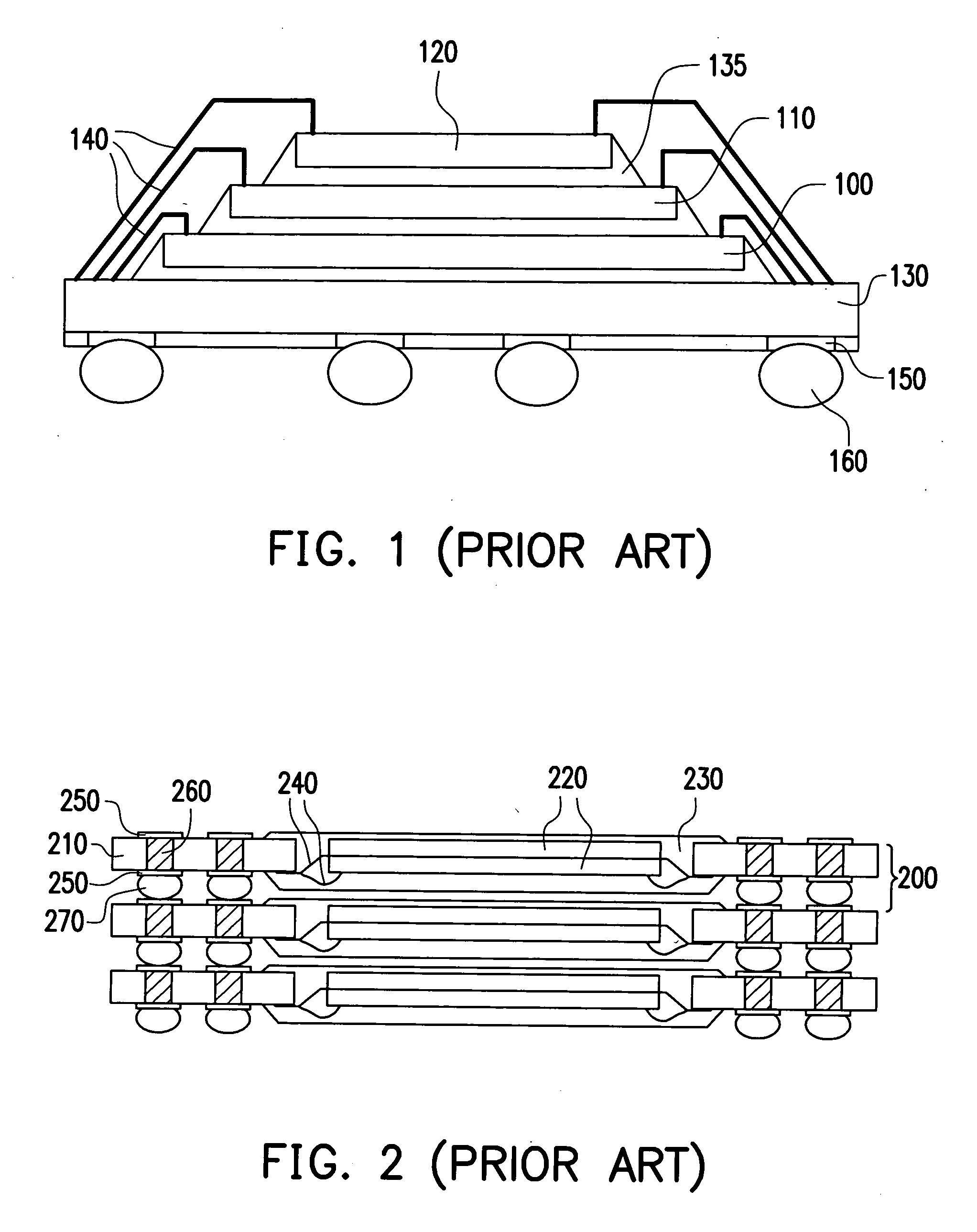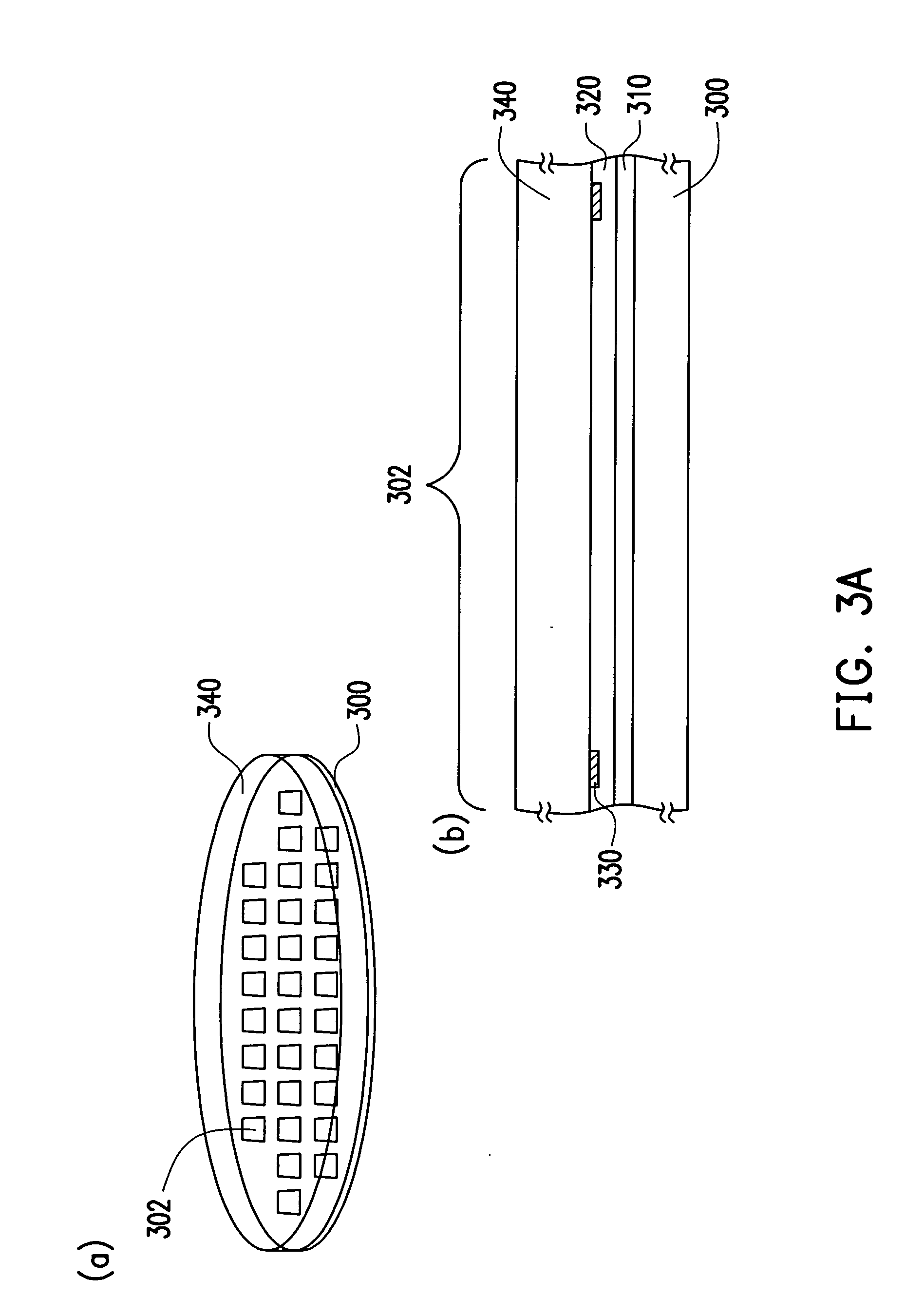System-in-package (SIP) structure and fabrication thereof
a technology of system-in-package and packaging, which is applied in the direction of semiconductor devices, semiconductor/solid-state device details, electrical apparatus, etc., can solve the problems of difficult thinning high cost inability to easily reduce thickness of conventional sip structures, etc., to achieve the effect of reducing thickness
- Summary
- Abstract
- Description
- Claims
- Application Information
AI Technical Summary
Benefits of technology
Problems solved by technology
Method used
Image
Examples
first embodiment
[0024] FIGS. 3A(b) and 3B-3H illustrates a process flow of fabricating an SIP structure according to the first embodiment of this invention in a local cross-sectional view, and FIG. 3A(a) illustrates the whole wafer area corresponding to FIG. 3A(b).
[0025] Referring to FIG. 3A(a) / (b), a semiconductor-on-insulator (SOI) wafer 300, such as, a silicon-on-insulator wafer, is provided, including an insulator 310 and a semiconductor layer thereon. The insulator 310 is a buried oxide layer, for example, and the semiconductor layer is a part of the layer 320 described latter. The thickness of the insulator 310 ranges from 1 μm to 10 μm. The SOI wafer 300 is then subjected to a complete fabricating process to form a circuit layer 320 based on the semiconductor layer and to define multiple die regions 302. The thickness of the circuit layer 320 ranges approximately from 10 μm to 100 μm, and the circuit layer 320 within each die region 302 has multiple bonding pads 330 formed thereon. Then, a ...
second embodiment
[0033]FIGS. 4A-4C illustrates a latter part of a process flow of fabricating an SIP structure according to the second embodiment of this invention in a local cross-sectional view, while the former part of the process flow may include the same steps as illustrated in FIGS. 3A-3E.
[0034] Referring to FIG. 4A, another cover plate 400 is bonded to the insulator 364 of the secondly stacked circuit / insulator composite layer 366 / 364 (FIG. 3E). The cover plate 400 can be completely the same as the cover plate 340. The material of the cover plate 400 may be glass, and the thickness of the cover plate 400 ranges approximately from 1 mm to 10 mm.
[0035] Referring to FIG. 4B, the original cover plate 340 is removed from the circuit layer 320 of the firstly stacked circuit / insulator composite layer 320 / 310 to expose the bonding pads 330 on the circuit layer 320.
[0036] Referring to FIG. 4C, after the cover plate 340 is removed, bumps 410 are formed on the bonding pads 330 of the bottom circuit l...
PUM
 Login to View More
Login to View More Abstract
Description
Claims
Application Information
 Login to View More
Login to View More - R&D
- Intellectual Property
- Life Sciences
- Materials
- Tech Scout
- Unparalleled Data Quality
- Higher Quality Content
- 60% Fewer Hallucinations
Browse by: Latest US Patents, China's latest patents, Technical Efficacy Thesaurus, Application Domain, Technology Topic, Popular Technical Reports.
© 2025 PatSnap. All rights reserved.Legal|Privacy policy|Modern Slavery Act Transparency Statement|Sitemap|About US| Contact US: help@patsnap.com



